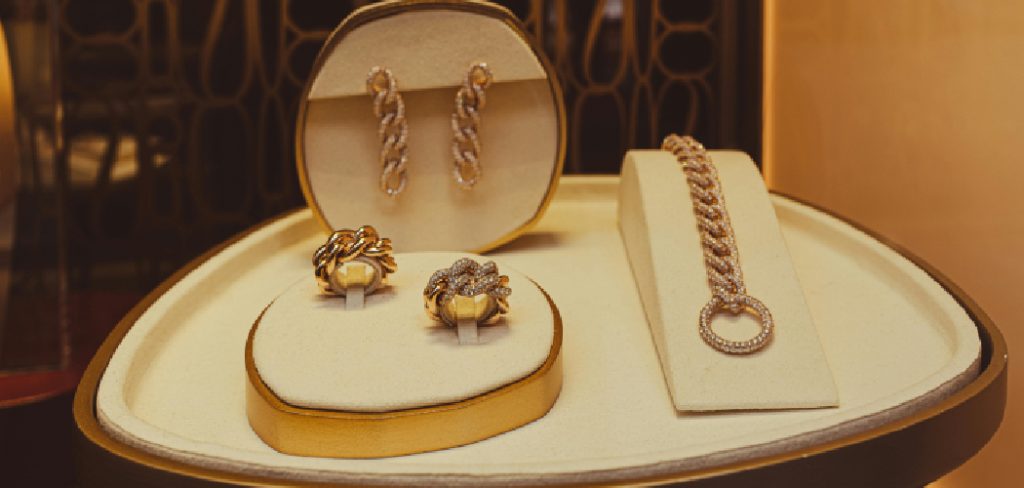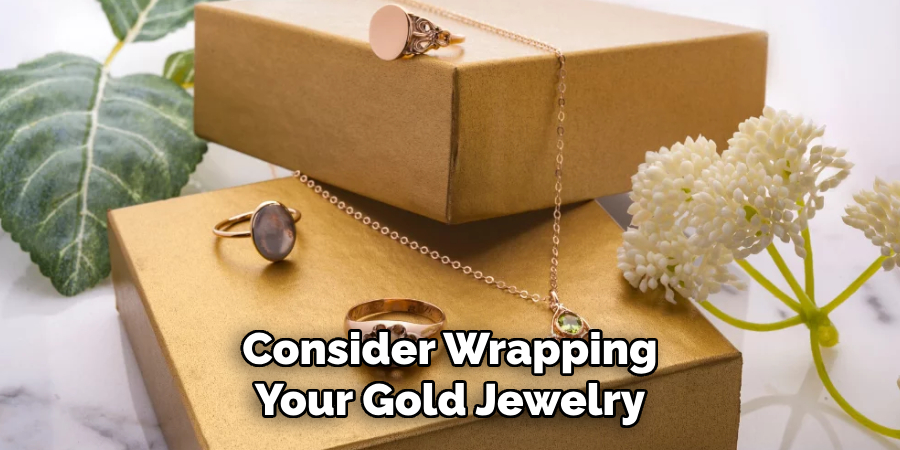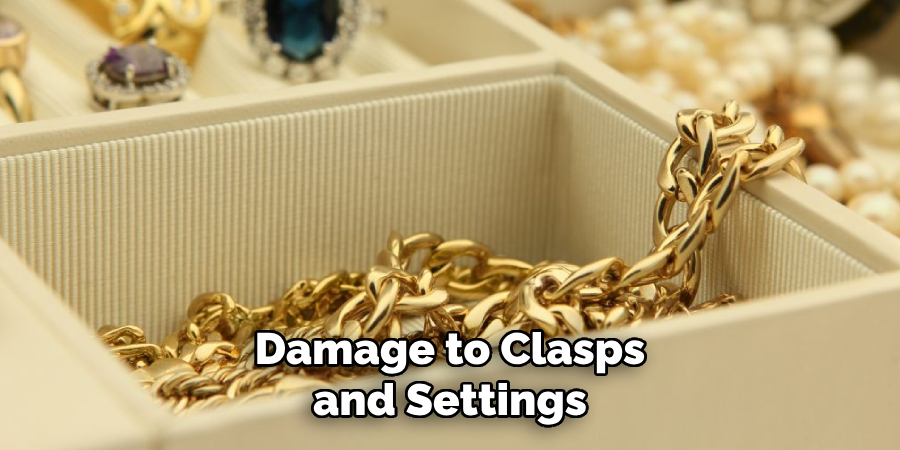Proper storage of gold jewelry is essential to maintain its shine, value, and durability over time. Whether you own delicate chains, ornate earrings, or statement rings, taking the right precautions when storing your gold pieces can prevent tarnishing, scratches, and other damage. By following a few simple guidelines on how to store gold jewelry, you can ensure your treasured items remain in pristine condition for years to come.

Importance of Proper Gold Jewelry Storage
Storing gold jewelry correctly is crucial to preserving its beauty and longevity. Gold, while resistant to tarnish, can still be damaged by improper handling or exposure to certain elements. Without proper storage, pieces can become scratched, tangled, or lose their luster. Humidity and direct sunlight can also affect gold over time, diminishing its value and appeal. By investing effort into proper storage practices, you not only safeguard your jewelry’s physical condition but also protect its sentimental and financial worth. Taking care to store your gold jewelry appropriately ensures that it can be enjoyed for generations to come.
Common Mistakes in Gold Storage
Improper storage of gold jewelry can lead to unnecessary damage and wear, reducing its beauty and value. One common mistake is storing multiple pieces together in a single container without proper separation. This can cause scratches as gold is a soft metal that can easily be damaged by contact with other items. Another frequent error is leaving gold jewelry in humid environments, such as bathrooms, where moisture can accelerate tarnishing and dull its shine.
Exposure to harsh chemicals, such as from cleaning agents or cosmetics, is another oversight that can harm gold’s surface. Lastly, failing to clean gold jewelry before storage can result in the buildup of dirt and oils, which may be difficult to remove later. Avoiding these common mistakes will help preserve your gold’s brilliance and keep it in optimal condition.
Tools and Materials for Storing Gold Jewelry
Having the right tools and materials is essential for proper gold jewelry storage. Use a dedicated jewelry box with soft, padded compartments to prevent scratches and tangles. Alternatively, small individual pouches made from soft materials like velvet or felt can provide additional protection for each piece. Anti-tarnish strips or cloths are also effective in absorbing moisture and preventing tarnishing over time. Silica gel packets are another useful addition, as they help reduce humidity in storage areas. For long-term storage, consider wrapping your gold jewelry in acid-free tissue paper before placing it in secure containers. With these tools and materials at hand, you can ensure that your gold jewelry remains safe and retains its brilliance.

10 Methods How to Store Gold Jewelry
1. Use a Jewelry Box with Compartments
A jewelry box with multiple compartments is one of the best ways to store gold jewelry. These boxes are designed to separate pieces, preventing them from scratching each other. Opt for a box lined with a soft fabric, such as velvet or felt, which cushions the jewelry and protects it from abrasion. Assign each compartment to a specific type of jewelry—rings, necklaces, bracelets, or earrings—to keep everything organized and easy to locate.
2. Wrap Each Piece in Soft Cloth
Wrapping gold jewelry in soft cloths, such as microfiber or muslin, provides an additional layer of protection. This method is particularly useful for intricate or delicate pieces that are prone to tangling or scratching. Place each wrapped item in a small pouch or a dedicated drawer to keep it secure. Avoid using tissue paper or paper towels, as these materials can leave fibers or scratch the surface of the gold.
3. Store in Anti-Tarnish Bags
Anti-tarnish bags are specially designed to protect precious metals from tarnishing due to exposure to air, moisture, and pollutants. While pure gold does not tarnish, alloys used in gold jewelry can be affected. These bags contain materials that neutralize tarnish-causing elements and are an excellent option for long-term storage. Ensure that each piece of jewelry is stored in its own bag to prevent contact with other items.
4. Keep Gold Jewelry in a Cool, Dry Place
Humidity and extreme temperatures can damage gold jewelry, causing discoloration or weakening the metal. Store your jewelry in a cool, dry place away from direct sunlight and sources of heat. Closets, drawers, or dedicated jewelry cabinets are ideal locations. Avoid storing gold in humid areas like bathrooms, as moisture can accelerate tarnishing or corrode clasps and settings.

5. Use Jewelry Organizers for Everyday Pieces
For gold jewelry you wear frequently, use jewelry organizers with easy access. Hanging organizers with clear pockets or trays with designated slots allow you to see your collection at a glance and minimize handling. This reduces the risk of accidental scratches or tangling. Choose organizers with a protective lining to safeguard the metal and ensure the pieces remain separated.
6. Invest in a Safe or Safety Deposit Box
Gold jewelry of significant monetary or sentimental value is best stored in a secure safe or a safety deposit box. Home safes provide protection against theft and environmental damage, while safety deposit boxes at banks offer an additional layer of security. Use small, labeled boxes or pouches to organize items within the safe. For added protection, consider safes with humidity control features to maintain optimal storage conditions.
7. Avoid Storing Gold Jewelry Together
Storing all your gold jewelry in a single pile or container can lead to scratches, tangling, and damage. Gold is a relatively soft metal that can easily be scratched by other pieces or materials. Use individual pouches, soft-lined compartments, or small boxes to separate each item. This is especially important for pieces with gemstones, as the stones’ hardness can scratch the gold.
8. Polish and Clean Before Storage
Always clean your gold jewelry before storing it for an extended period. Oils from your skin, lotions, and dirt can accumulate on the surface and cause discoloration over time. Use a mild soap solution and a soft-bristled brush to clean the jewelry, then rinse thoroughly and pat dry with a lint-free cloth. Never store damp jewelry, as moisture can lead to tarnishing or damage to clasps and settings.

9. Use Hooks for Storing Necklaces
Necklaces are prone to tangling when stored improperly. Use hooks or a necklace stand to hang them individually. This not only prevents tangles but also reduces the risk of kinks in delicate chains. Choose a stand or hooks with a padded or coated surface to protect the gold from scratches. If you prefer enclosed storage, ensure necklaces are laid flat in a box with dividers or placed in anti-tarnish pouches.
10. Regularly Inspect and Rotate Stored Jewelry
Even when stored properly, gold jewelry benefits from occasional inspection and rotation. Check stored pieces for signs of wear, tarnish, or damage to clasps and settings. Polishing and cleaning the jewelry periodically can maintain its luster. If you have a large collection, rotate the pieces you wear to prevent uneven wear and keep all items in good condition. Regular handling also allows you to spot and address potential issues early.
Troubleshooting Common Issues
Even with proper care and storage, gold jewelry may occasionally encounter issues. Here are some common problems and how to address them:
1. Tarnishing or Discoloration
While pure gold does not tarnish, gold alloyed with other metals may show signs of discoloration over time. This can happen due to exposure to moisture, air pollutants, or certain chemicals. To address this, clean the jewelry with a soft cloth and a mild soap solution. For stubborn tarnish, use a gold-specific polishing cloth or take the piece to a professional jeweler.
2. Scratches on Gold
Gold is a soft metal and can be scratched if stored or handled improperly. Minor scratches can often be buffed out with a soft, lint-free cloth or a polishing cloth designed for gold. For deeper scratches, consult a professional jeweler who can restore the piece’s surface with proper tools and techniques.
3. Tangles in Necklaces or Chains
Necklaces and chains can easily get tangled, especially when stored together or inappropriately. To fix this, gently lay the tangled necklace on a flat surface and use a safety pin or needle to carefully undo the knots. Prevent future tangles by storing chains individually on hooks or in anti-tarnish pouches.

4. Loose Stones or Settings
Over time, prongs or other settings that hold gemstones in place can loosen. Regularly inspect your jewelry for wobbly stones or bent settings. If you notice an issue, avoid wearing the piece and take it to a jeweler for repair to prevent losing any stones.
Conclusion
Proper care and storage are essential to maintaining the beauty and longevity of your gold jewelry. By following these guidelines, you can prevent damage, tarnishing, and discoloration while ensuring your collection remains in excellent condition for years to come. Whether it’s investing in anti-tarnish pouches, using jewelry organizers, or regularly inspecting your pieces, these small steps can make a big difference. So, there you have it – a quick and easy guide on how to store gold jewelry.
Edmund Sumlin is a skilled author for Metal Fixes, bringing 6 years of expertise in crafting a wide range of metal fixtures. With a strong background in metalwork, Edmund’s knowledge spans various types of fixtures, from decorative pieces to functional hardware, blending precision with creativity. His passion for metalworking and design has made him a trusted resource in the industry.
Professional Focus:
- Expert in Metal Fixtures : Edmund aesthetic specializes in creating durable and innovative metal fixtures, offering both appeal and functionality. His work reflects a deep understanding of metalworking techniques and materials.
- Sustainability Advocate : He is dedicated to using sustainable practices, ensuring that every fixture is crafted with eco-friendly methods while maintaining high-quality standards.
In his writing for Metal Fixes, Edmund provides valuable insights into the latest trends, techniques, and practical advice for those passionate about metal fixtures, whether they are professionals or DIY enthusiasts. His focus on combining artistry with engineering helps others discover the true potential of metal in design.


